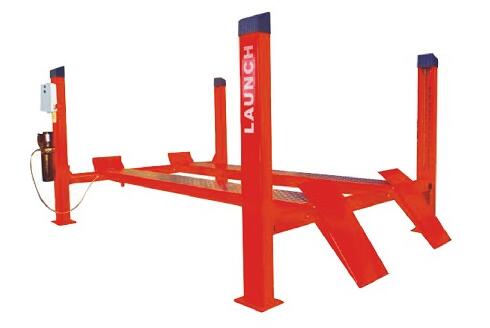During the use of the vehicle, the position of the wheel may be tilted or misaligned due to some reasons, so some adjustments are needed. At this time, the correspondingDynamic 4 wheel alignmentTo adjust the 4-wheel alignment. Therefore, auto repair equipment manufacturers emphasize that 4-wheel alignment is very important. This can reduce the wear of related auto parts and make the car lighter and smoother during straight-line driving. However, in the process of adjustment, you need to master the following skills.
1. Ask about symptoms and test drive first
The auto repair equipment manufacturer emphasizes that the problem needs to be found before adjustments can be made, so it is necessary to listen to the driver's description of the car's symptoms as a preliminary diagnosis to determine the problem. Some easy-to-find places can be seen, while some intuitive aspects cannot be found and need to be further understood or tested with the help of equipment. It is necessary to find out whether the key parts are loose or deformed, bent, and whether the related sleeves are broken and worn.
2. Find the crux of the problem one by one
After the initial inspection, check other suspicious parts one by one. Since only 4-wheel alignment cannot really find the fault and solve the problem fundamentally, a careful and systematic inspection is required. The manufacturer of dynamic 4-wheel alignment emphasizes that we should pay special attention to the inspection of the steering and suspension systems. This method can be used to analyze the real cause of the fault very comprehensively, quickly and accurately, so as to adjust or repair the plan.
The above are the tips for adjusting the 4-wheel alignment using a dynamic 4-wheel aligner. In addition to the 4-wheel alignment process, you should also understand that all related parameters are related and cannot be separated. The manufacturer of the through-type 4-wheel aligner recommends that if the adjustment of one angle does not achieve the ideal effect, there will be a chain reaction with other values, so you can flexibly consider slightly adjusting another parameter to offset the negative impact, so as to achieve overall coordination.

Related Industry Knowledge
- ADAS advanced auxiliary driving calibration equipment calibration purpose
- What is the function of the high-speed ABS brake test rig?
- Introduction to non-contact four-wheel aligner
- Main configuration of ABS brake table
- Safety inspection project
- Comprehensive drum test bench product introduction
- Tire pressure equipment operating instructions
- Non-contact four wheel aligner operating procedures
- Application of laser measurement technology in automobile four wheel aligner
- Dynamic four wheel aligners have formed a trend
- What are the common tools for comprehensive diagnostic equipment of vehicle off-line?
- Overview of Non-Contact 4-Wheel Alignment
- What are the advantages of large vehicle 4 wheel alignment
- What are the precise measurement techniques for the toe value of the car's 4-wheel aligner?
- Future development of comprehensive vehicle off-line diagnostic equipment
- Detection advantages of 3D laser 4-wheel aligner
- Don't underestimate high-speed ABS brakes
- Installation and maintenance of 3D laser 4 wheel alignment
- Non-contact 4-wheel alignment instrument purchase matters
- The use and maintenance of dynamic 4-wheel alignment
